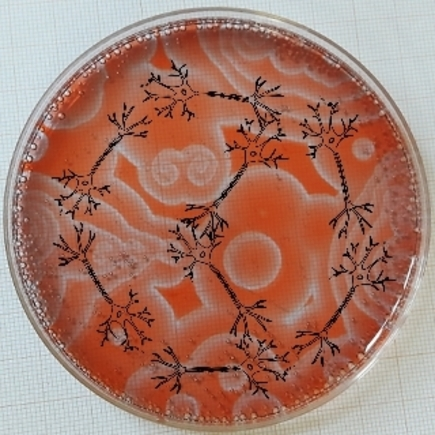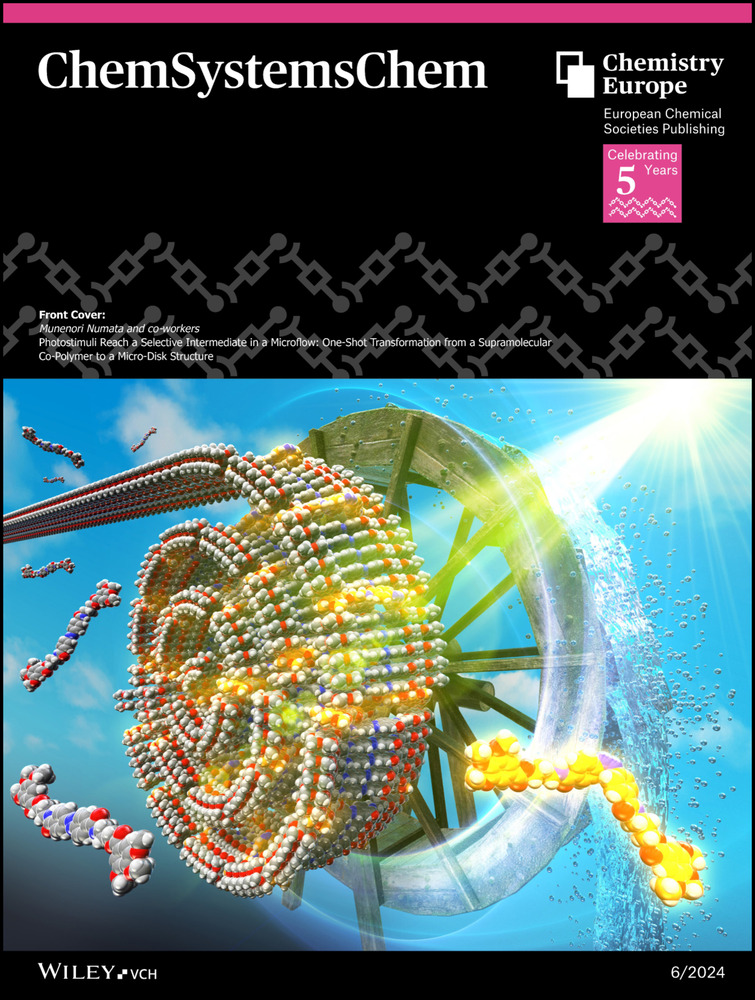Empowering Chemical AI Through Systems Chemistry
Graphical Abstract
Chemical Artificial Intelligence (CAI) devises liquid chemical systems that mimic some performances of biological and human intelligence. The systems, which often are inspired by neuronal nets, can assist humans in making decisions. The next grand challenge is to devise autonomous chemical systems that can colonize the molecular world with remarkable technological applications. CAI also promises to elucidate the mysterious event of life‘s appearance on Earth.
Abstract
This work presents some ambitious perspectives on how Systems Chemistry can contribute to developing the quite new research line of Chemical Artificial Intelligence (CAI). CAI refers to the efforts of devising liquid chemical systems mimicking some performances of biological and human intelligence, which ultimately emerge from wetware. The CAI systems implemented so far assist humans in making decisions. However, such CAI systems lack autonomy and cannot substitute humans. The development of autonomous chemical systems will allow the colonization of the molecular world with remarkable repercussions on human well-being. As a beneficial side effect, this research line will help establish a deeper comprehension of the mesmerizing phenomenon of the origin of life on Earth and how cognitive capabilities emerge at a basic physico-chemical level.
Introduction
The 2030 Agenda, compiled by the United Nations, contains a collection of goals that promote a sustainable future if pursued worldwide.1 These goals regard all human beings and their societies, the world economy, the urban areas, the natural ecosystems, and the climate, which are instances of Complex Systems.2 Therefore, it is clear that if we desire a sustainable future, we cannot ignore our need to deal with Complex Systems. Unfortunately, current scientific enquiry encounters some limitations in describing and predicting the behavior of those Complex Systems.3-8 Some limitations can be overcome if we devise: (1) more effective methodologies to analyse and (2) more realistic models to describe Complex Systems, (3) new algorithms and (4) computing machines for solving more effectively intractable computational and pattern recognition problems. All these purposes can be pursued in various manners, but here we would like to focus on the interdisciplinary research line of Natural Computing (see Figure 1), which has the strongest chemical pertinence. Natural Computing is based on the idea that any distinguishable physicochemical state of matter and energy can be used to encode information, and every natural transformation of these states is a kind of computation.9 Two principal research programs sustain Natural Computing, as shown in Figure 1. One exploits the physicochemical laws to make computations. Any physicochemical law describes a causal event, and any causal event can be conceived as a computation: the causes are the inputs, the effects are the outputs, and the law (governing the transformations) becomes the computation algorithm. The other research program mimics the life forms (and, for convenience, also viruses),10 which are “Natural Information Systems (NISs)”, also called “Information Gathering and Utilizing Systems” (IGUSs).11-15
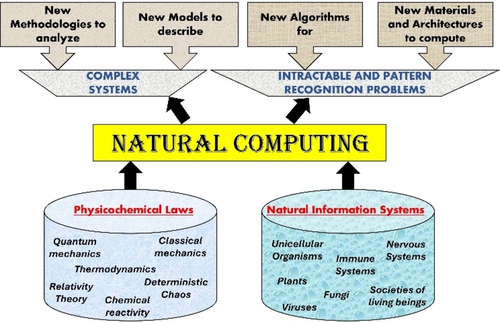
Schematic structure of Natural Computing showing its two research programs (within the two cylinders at the bottom) and its purposes (on top).
Any living being, both unicellular (including viruses) and pluricellular, can exploit matter and energy to encode, collect, store, process, and send information to pursue their goals. Although we still lack a universally accepted definition of intelligence, assuming that any NIS shows some form of intelligence – even at a minimal level – seems reasonable.16 Intelligence is a “suitcase word” because its meaning is very broad and multifaceted.17 The wider the spectrum of purposes, the more extended the intelligence of every NIS will be.
Although it seems that teleonomy (i. e., the feature of having purposes without the intervention of humans) is a peculiarity of living matter,18 it is worthwhile trying to mimic some performances that support the intelligent activities of NIS, such as sensing, computing, memorizing, working, and sending messages. These activities and many others are implemented in soft matter by NISs, which are complex adaptive systems working in out-of-equilibrium conditions. Chemical Artificial Intelligence (CAI)19-26 represents the unconventional attempts to reproduce the intelligent activities of NISs in wetware, i. e., liquid solutions through Molecular, Supramolecular, and Systems Chemistry (see Figure 2). CAI, therefore, diverges from the well-known AI and robotics based on software and hardware; moreover, it should not be confused with the use of AI tools in chemistry. Two are the principal technological goals of CAI. The first is the implementation of computing machines revolutionizing the von Neumann architecture of current electronic computers, whose principal drawback is that of having the memory and the processor physically separated in space. Brain-like computing machines, having biological brains27 as architectural and functional paradigms, would eliminate that defect: they would guarantee high parallelism and be particularly helpful in solving pattern recognition problems. The second revolutionary technological goal of CAI is a new kind of robotics, which is expected to be soft and microscopic.20, 28 The so-called Chemical Robots will be cell-like structures or synthetic cells. They are imagined as confined (self-bounded) but thermodynamically open molecular assemblies that react autonomously because they have (1) sensors to collect data about the environment and the internal state of the robot, (2) artificial neural networks to process the sensory data and make decisions, and (3) effectors that act upon the environment after receiving the inputs from the internal “brain” of the robot. Remarkably, by brain, we intend an autonomous chemical reaction network. While the term “autonomy” is often used with reference to matter/energy requirements (e. g., Chemical Robots based on metabolic units that energetically sustain their intelligent activities), its theoretical meaning refers to the more general property of being self-determined by an owned set of causal relations, capable of adaptation. Chemical Robots are expected to help humans colonize the molecular world to fight diseases and pollution, extend longevity, and contribute to supplying energy and food to a growing human population.29

Bases and purposes of Chemical AI. CAI has Natural Information Systems (NISs) as its paradigms and develops through Molecular, Supramolecular, and Systems Chemistry. Its technological goals are (1) implementing new computing machines and (2) developing chemical robotics. An exciting and pleasant side effect of its development will be a clearer elucidation of two remarkable emergent properties: intelligence and life.
The development of CAI is supposed to have a pleasant side effect: it will help humans to elucidate two remarkable emergent properties, intelligence and life, which are embodied in those Complex Systems we call living organisms. Life's appearance on Earth is described as a “phase transition” from an utterly inanimate world to a world wherein the first living chemical systems popped up about 3.5 billion years ago. The latter chemical systems could exploit matter and energy to gather and utilize the information and pursue goals.30, 31 These astonishing chemical systems were the first living and intelligent beings to emerge somehow on our planet. The design and implementation of chemical systems exhibiting intelligent activities will probably demonstrate how that mesmerizing “phase transition” occurred. The basic actions of any intelligent being are: sensing, computing, and working. They can be executed, at an elementary level, by proper single molecules or supramolecules. However, a systems chemistry perspective is essential to increase these performances, and approach full-fledged CAI. This article mainly describes sensing and computing functions from a Systems Chemistry perspective, while working functions (carried out by actuators or effectors) are only shortly mentioned. More details on actuation can be found in excellent articles.32-34
Systems Chemistry for Sensing
The rank of the square matrix equals the number of atoms constituting the molecule. An element of the matrix will differ from 0 if the two atoms, , are linked covalently or interact electrostatically through space; otherwise, it will be 0. There exist compounds that respond to physical inputs by changing their structural formula without changing the number of atoms, and hence the rank of the matrix .36 For instance, the spirooxazine molecule (SpO) shown in Figure 3A responds to UV, heat, and mechanical forces producing a merocyanine (MC) and originating an easily observable colour change.37 Compounds that react selectively with specific chemical species, often changing the rank of their adjacency matrix (through the addition or release of atoms), can be exploited as probes of peculiar chemical inputs if they also originate easily detectable instrumental signals.38-45
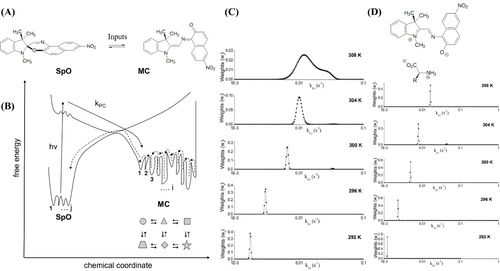
The structure of a spirooxazine (SpO) that reversibly transforms into a merocyanine (MC) upon physical inputs is shown in (A). The free energy profile for SpO transforming into MC photochemically and a collection of MC conformers (represented as distinct geometrical figures) reverting back to SpO thermally are reported in (B). Relative weights (wi) of the kinetic constants for the thermal MC→SpO reaction at different temperatures in (C) and in the presence of glycine, which interplays with MC and affects the MC conformational distribution in (D) (Figures 2C and 2D have been adapted from [47] with permission. Copyright (2014) Elsevier).
A compound can respond to physical or chemical inputs by changing its conformational distribution, i. e., the collection of adjacency matrices, but maintaining its structural formula. For instance, the conformational distribution of MC (shown schematically in Figure 3B) has been demonstrated to be sensitive to temperature (Figure 3C shows the distributions of the kinetic constants for the thermal reaction at different temperatures, which are attributable to the MC's conformational distributions that depend on T) and the supramolecular interaction with glycine (Figure 3D shows that the MC's conformational distributions look sharp whatever is the temperature).47 The conformational distribution of almost any compound exhibits sensitivity towards the heterogeneity of the surrounding microenvironment.48
A probe is multimodal if its stimulus-induced structural change can be detected through distinct techniques.49-51
Systems chemistry empowers sensing because a collection of properly selected molecular probes, organized as a whole (e. g., a sensorial unit), dispersed in the same solution or deposited on specific portions of a surface, cooperate in discriminating physical or chemical inputs in a parallel manner through spectral, spatial or temporal separation of the output signals. The very fact that a set of molecular probes is intended as a whole (a system) for functional reasons generates additional constraints in their operations that elevate the network to a higher complexity level. This strategy has been named multiplexed or multitasking sensing.52-55 An effective strategy for selecting the chemical composition of the system made of multiple probes is based on the theory of fuzzy sets.56-58 A fuzzy set differs from a Boolean set because any element belongs to a fuzzy set to a certain degree and can be any real number between 0 and 1.59 Probes are fuzzy when they are not selective but sense different values of a variable at different degrees. A collection of “fuzzy probes” granulates the physicochemical variables. A sheer example is offered by the three photoreceptor proteins belonging to the retina‘s three cones: the so-called blue, green, and red photoreceptors (see Figure 4A). Their absorption spectra are three fuzzy sets granulating the visible region: lights having distinct spectral compositions excite the three photoreceptors at different degrees. Every peculiar combination of the membership degrees is interpreted as a specific hue in our brains. An imitation of human colour vision at the level of the retina has allowed the extension of human colour vision to the UV: a system of properly chosen direct photochromic compounds, which absorb the UV and give rise to characteristic spectral bands in the visible, allows the discrimination of the three UV regions (UV−A, -B, and -C) based on the colour it generates (see Figure 4B).60, 61
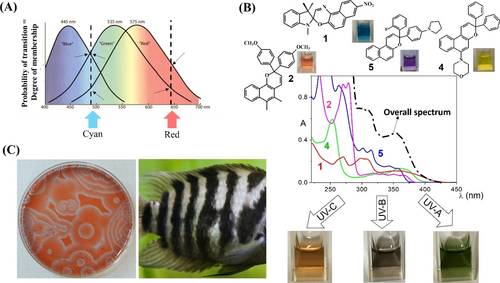
(A) Spectral features of the human retina‘s blue, green, and red photoreceptors: cyan and red lights belong to the three spectral fuzzy sets at different degrees (adapted from [57], published under a CC By License). (B) A mixture of 1, 2, 4, and 5 photochromic compounds, each providing a peculiar colour when irradiated alone, can discriminate UV−A, -B, and -C by originating green, grey, and orange colours, respectively (adapted from [60], published under a CC By 3.0 License). (C) Pictures of chemical waves originating from the Belousov-Zhabotinsky reaction (left) and the natural Turing pattern of a zebrafish (right; image in the public domain CC0).
Another remarkable example of a system of “fuzzy probes” is offered by the innate immune system, which is a collection of antibodies and T-cell receptors granulating the chemical space of antigens. Although the repertoire of sensing proteins is limited, the immune system can bind and recognize an almost infinite number of antigens. The conundrum of “infinite ligands for finite receptors” has been solved considering that any protein receptor subsists as an ensemble of conformations.62-64 Each protein receptor (having a specific aminoacidic sequence) is a conformational fuzzy set.46 The “infinite” chemical space of antigens is granulated by the protein repertoire: any antigen is recognized through its peculiar sequence of membership degrees to all the protein receptor-fuzzy sets. Such a strategy can be mimicked for designing chemical sensory systems approaching the fuzziness, i. e., the multi-specificity and cross-reactivity, of the natural immune system.65
Systems Chemistry contributes to sensing also through those nonlinear chemical reactions capable of originating spontaneous chemical oscillations.66 Oscillatory chemical reactions respond to pulsed chemical perturbations by changing their characteristic frequencies and amplitudes of oscillations. They are used as analytical tools.67-70 The same reactions, coupled with diffusion, give rise to patterns that can be dynamic, such as the chemical waves, or static, such as the Turing patterns (see Figure 4C). The features of these patterns have been demonstrated to be sensitive to chemicals,71 UV-visible radiations,72 and acoustic waves.73 Therefore, they can be exploited as probes of physicochemical inputs.
Systems Chemistry for Computing
In equation (4), is the kinetic constant of the reaction and is the Avogadro's number. The computational parallelism of molecular reaction networks is remarkable: if the rate-determining step is the encounter of the reactants (X and Y) by diffusion, , and if , then per units of time and volume. In a solution's volume ( ) of 1 liter, results five orders of magnitude faster than the current best electronic supercomputer in the world, reaching the exascale (i. e., 1018 number of operations per second), according to the TOP500 list.75 After all, the number of molecular neural surrogates is gargantuan: Assuming equimolar amounts for X and Y, , which corresponds to the amount of neurons contained in roughly 500 million human adult brains.76 In any liquid solution, the ANN's architecture is not rigid but fluid because the molecular nodes move randomly by diffusion and/or are drifted by the liquid's advection currents. The overall shape and size are fixed by the solid flask containing the solution77 (see Figure 5A). The outstanding parallelism of chemical reaction ANNs is helpful for facing computational NP hard problems. The Adleman's experiment of using the DNA hybridization reaction for tackling the NP hard Traveling Salesman problem is emblematic.78 They are also helpful for recognizing variable patterns.73, 79
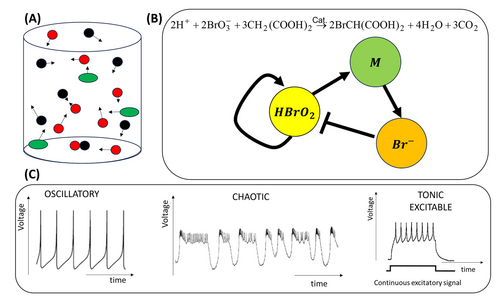
Sketch A represents a beaker containing molecular reagents (black and red dots) and products (green ovals) as an instance of a chemical ANN based on one reaction. Part B shows the recurrent network generated by the intermediates of the BZ reaction. Part C reports the trends of the voltage vs. time for oscillatory, chaotic, and tonic excitable neurons. Oscillatory and chaotic neurons fire action potentials periodically and aperiodically, respectively. Tonic excitable neurons respond to excitatory signals by firing a train of action potentials, and then, they recover the original stationary stable state.
Some chemical reactions are complex when they involve many elementary steps, and some of their intermediates exert strong feedback actions, giving rise to a chemical recurrent network.66, 80 A prototype is the Belousov-Zhabotinsky (BZ) reaction, a catalyzed oxidative bromination of malonic acid in an aqueous acidic solution (see Figure 5B). Among the many intermediate species participating in the BZ reaction, three play crucial roles: (1) bromous acid ( ), (2) a transition metal catalyst that can assume two redox states ( ), and (3) bromide ( ). The autocatalytic reaction of generates a co-product, which is the oxidized state of the transition metal catalyst. Then, is responsible of the production from bromomalonic acid. Finally, exerts a delayed inhibition on autocatalysis. The three chemical protagonists give rise to the recurrent network depicted in Figure 5B.8 Depending on the physicochemical conditions chosen for carrying out the BZ reaction, it can reproduce, as bottom-up emergent properties, the three principal neural dynamical regimes, which are oscillatory, chaotic, and tonic excitable, as displayed in Figure 5C.
The BZ reaction is just one of the many complex nonlinear chemical reactions that can reproduce the dynamics of real neurons.8, 66, 72 These single chemical neural surrogates can be confined to either macro- or micro-reactors. The reactors can be arranged in either feedforward or recurrent networks. Their communication can be guaranteed by chemical, electrical, and optical signals, originating spontaneous spatiotemporal synchronization phenomena analogous to those shown by the neural networks in the brain.81-86 ANNs with all the nodes in the oscillatory regime are useful computing platforms. They encode analog information in the values of oscillations’ frequencies and phase relations between distinct nodes. They are low-power-consuming because the information is not encoded in the amplitude of the oscillations, which can be quite low. Oscillatory ANNs help recognize variable patterns: learned patterns are synchronized oscillatory states in which neural surrogates fire periodically with peculiar frequencies and phases.87
In alternative to nonlinear chemical reactive systems, proteins that exhibit nonlinear allosteric effects are particularly alluring for implementing molecular recurrent networks.88 Reagents, products, and other molecules that bind to the enzyme‘s effector sites might affect their catalytic activities. It is now evident that a large portion of the proteome comprises the so-called Intrinsically Disordered Proteins (IDPs).89, 90 IDPs are characterized by the lack of a rigid 3D structure. Each of them exists as an abundant conformational collection whose features (types and relative abundance of conformers) are context-dependent. Their conformational heterogeneity allows the implementation of intrinsically fuzzy reaction networks that guarantee adaptability and the capability to make decisions in environments dominated by uncertainty and vagueness.65 It is possible to imagine introducing such fuzzy reaction neural networks within Synthetic Cells (SCs), which refer to micrometric or submicrometric cell-like structures built from scratch by processes of self- or guided-assembly of molecular components of various sorts.65, 91 The design of hierarchical networks will be possible when an SC can become a node of an ANN made of other SCs (or living cells, in a hybrid synthetic/biological design)) to imitate biological tissues′ organizational and functional features. Based on the trendy research on organoids, it seems likely that in the synthetic cellular ANNs, two- or three-dimensional cultures of human brain cells (the so-called brain organoids) will become fascinating targets for future research, possibly leading to the reconstruction of the histoarchitecture and functionality of real neural networks.92
Systems Chemistry for Actuation
Many compounds used for sensing and computing perform their functions by concerted movements of their molecular structural units, analogously to the movements of macroscopic machines’ constituents. When these compounds operate cyclically, they work as Molecular Machines. If they go back and forth between two states, they are simple switches. When useful work is generated within a cycle, they are named Molecular Motors.32, 93 Molecular Machines operate at the nano- or subnano- levels. Their work carried out at the molecular level can be transferred to larger spatial scales, i. e., at the mesoscopic and macroscopic levels. It is required that Molecular Machines are properly aligned in space and work synchronously through out-of-equilibrium conditions guaranteed by either mesoscopic or macroscopic force fields.94
Most chemical actuators rely on external force fields to power their cyclic activities. Systems Chemistry can make them autonomous because properly designed networks of chemical reactions can transform chemical energies into mechanical energies.34, 95 Effectors based on Systems Chemistry are usually soft. Soft actuators are flexible and adaptable, making them particularly appropriate to interplay with living beings and fragile objects. They will be valuable for the development of chemical robots. A detailed description of the chemical composition of the most successful actuators can be found in recent review articles and is not further discussed in this perspective.22, 24, 32, 96, 97
Systems Chemistry for the Next Grand Challenge of CAI
Conventional AI systems, implemented in software or hardware, are narrow because they can perform a single task or a limited scope of tasks. Moreover, they suffer from a long-criticized strong limitation, i. e., they do not autonomously self-generate meaning. This is because they operate on the syntactic level, that is, manipulating symbols according to logic rules, and not on the semantic one. The Grand Challenge to be undertaken is the development of Artificial General Intelligence (AGI) systems that should reproduce, according to its highest ambition, human cognitive intelligence as a whole in a domain-independent way.98 CAI is clearly some steps backwards with respect to AI systems implemented in software. CAI systems are narrow and supervised because they can assist humans and extend their intelligent actions deep down to the molecular world, but they cannot substitute humans so far because they lack authentic autonomy. However, the chemical domain is the proper domain for developing a basic form of authentic AI because it is possible to emulate (not simulate) the mechanisms operating in biological systems only through chemistry.99 The next Grand Challenge becomes the design of unsupervised and general CAI systems that would be capable of moving from sensing to perceiving, from computing to planning, and from working to acting in the molecular world.19 Systems Chemistry and Molecular, Supramolecular and Materials Chemistry will surely contribute to the attempts to achieve these revolutionary transitions. All the best CAI performances have been achieved so far through dissipative structures,100 i. e., inanimate out-of-equilibrium systems showing spatiotemporal self-organization phenomena analogous to those of living matter,although they are driven only by physicochemical force fields.26 CAI systems must be perfected to show two basic features of biological intelligence. Firstly, they should have some degree of goal-directedness (or teleonomy), i. e., some ability to take different paths to reach the same goal. Secondly, they should have some ability to undertake actions that are not completely determined by local circumstances, i. e., they should take independent actions.74
It has been claimed that goal-directedness can be implemented without conscious intention, which is typical of living matter, through the nonlinear dynamics of chemical systems that exhibit attractors and basins of attractions.101 An attractor is either a point or a limit cycle or a region in the system's phase space to which all trajectories in the attractor's basin converge so that the attractor works as the “goal” of the system. When external perturbations maintain the system within the basin, the chemical system can reproduce resilience and homeostasis, representing the living beings’ power to resist changes. On the other hand, when perturbations are so strong to push the system outside its original basin, it can find a new attractor or goal after roaming its phase space and reproduce allostasis, which is the living matter's attribute to adapt to “stressing” changes.102
The second basic feature of biological intelligence, the capability to take independent actions despite local circumstances, is much tougher to implement chemically. It requires memory, learning capacities, and decisions in uncertain conditions. Uncertainty emerges from the exceptionally noisy and complex molecular world: sensory data are noisy, and decisions do not always lead to the expected outcomes. Cox's theorem sustains that probability theory provides a sensible and coherent way to reason under uncertainty.103 Knowledge is represented by probability distributions, and acquiring new knowledge is made possible by following the rules of probabilistic inference. According to the most credited theories, living beings, from humans to unicellular organisms, make probabilistic inferences according to Bayes's rule (see equation 5).104-111
Due to some structural and functional analogies between biological cognition and fuzzy logic systems,56, 112 all the terms appearing in equation (5) are interpretable as fuzzy sets.58 This analogy blazes a trail for the chemical implementation of Bayesian inference through Systems Chemistry. Single fuzzy sets are implemented through compounds that exist as ensembles of conformers,46 as already explained above. Systems of properly chosen molecular fuzzy sets permit the granulation of the physicochemical variables.60 When the molecular fuzzy sets participate in reactive recurrent networks, the flexibility of the reciprocal connections will confer learning capabilities to the chemical system.65, 91 Higher cognitive functions will be within reach by increasing the complexity of the chemical fuzzy neural networks.113 Reactive chemical modules playing different functions will be assembled through their compartmentalization, as in living and SCs. Hierarchical networks will be implemented by assembling distinct SCs linked through chemical communication. A Poisson distribution of the SCs′ chemical contents can originate a behavioural distribution of SCs, given a certain population. Such behavioural distribution can be appropriate for implementing a fuzzy logic scheme in a set of SCs‘ population. With strong reciprocal and adaptable connections, webs of SCs will exhibit a collective intelligence,74, 114 presumably reproducing Bayesian inference. Moreover, a theoretical framework called “active inference” has been recently developed to understand the perception-action loops that characterize the cognitive behavior of living systems.115 Its application to SCs can guide the next developments and facilitate the design of proper systems endowed with cognitive capabilities, although this ambitious target today appears still far from practical implementation. Including these perspectives in contemporary SCs’ research seems intriguing, at least at the level of theoretical modeling, as they can help shape the future of impactful chemical developments.
If such a vista becomes within reach, it will be a remarkable achievement for CAI with concrete technological repercussions: Chemical Robotics will become autonomous and capable of colonizing the molecular world with evident benefits. In addition to applied science perspectives, in particular in those applications where interfacing with biological systems is essential (smart drug delivery, regenerative medicine, internet of bio-nano-things,116, 117 miniaturized sensors, screening, testing, etc.), such a revolutionary technology will contribute to the deeper comprehension of the generative mechanisms in origin and evolution of life.
Acknowledgments
P. L. Gentili acknowledges the European Union – NextGenerationEU under the Italian Ministry of University and Research (MUR) National Innovation Ecosystem grant ECS00000041 – VITALITY. He is grateful to Università degli Studi di Perugia and MUR for support within the project Vitality. The research on synthetic cells and minimal cognition based on autopoietic organization has been also funded by MUR, within the PRIN2022 program (An Organizational Approach to the Synthetic Modeling of Cognition based on Synthetic Biology and Embodied AI; grant number 20222HHXAX). Open Access publishing facilitated by Università degli Studi di Perugia, as part of the Wiley - CRUI-CARE agreement.
Conflict of Interests
The authors declare no conflict of interest.
Open Research
Data Availability Statement
The data that support the findings of this study are available from the corresponding author upon reasonable request.



